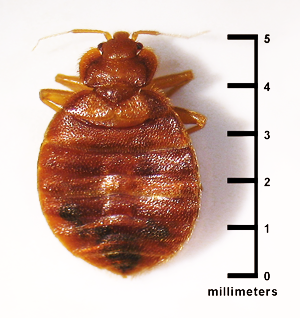
The common bed bug (Cimex lectularius) has long been a pest – feeding on blood, causing itchy bites and generally irritating their human hosts. The Environmental Protection Agency (EPA), the Centers for Disease Control and Prevention (CDC), and the United States Department of Agriculture (USDA) all consider bed bugs a public health pest. However, unlike most public health pests, bed bugs are not known to transmit or spread disease. Bed Bug Facts
Check secondhand furniture, beds, and couches for any signs of bed bug infestation before bringing them home.
Protecting your Home for Bedbugs
Use a protective cover that encases mattresses and box springs to eliminate many hiding spots. The light color of the encasement makes bed bugs easier to see. Be sure to purchase a high quality encasement that will resist tearing and check the encasement regularly for holes or a cover that has been pre-treated with pesticide to control bed bugs.
Reduce clutter in your home to reduce hiding places for bed bugs.
Vacuum frequently to remove any successful hitchhikers.
Be vigilant when using shared laundry facilities. Transport items to be washed in plastic bags (if you have an active infestation, use a new bag for the journey home). Remove from dryer directly into bag and fold at home. (A dryer on high heat can kill bed bugs.)
If you live in a multi-family home, try to isolate your unit by:
Installing door sweeps on the bottom of doors to discourage movement into hallways.
Sealing cracks and crevices around baseboards, light sockets, etc., to discourage movement through wall voids.
Consider purchasing a portable heating chamber to treat any items that you believe may have bed bugs.
Be sure to read and carefully follow the directions if you use one of these units and be aware that they are not regulated by EPA or other federal agencies.
